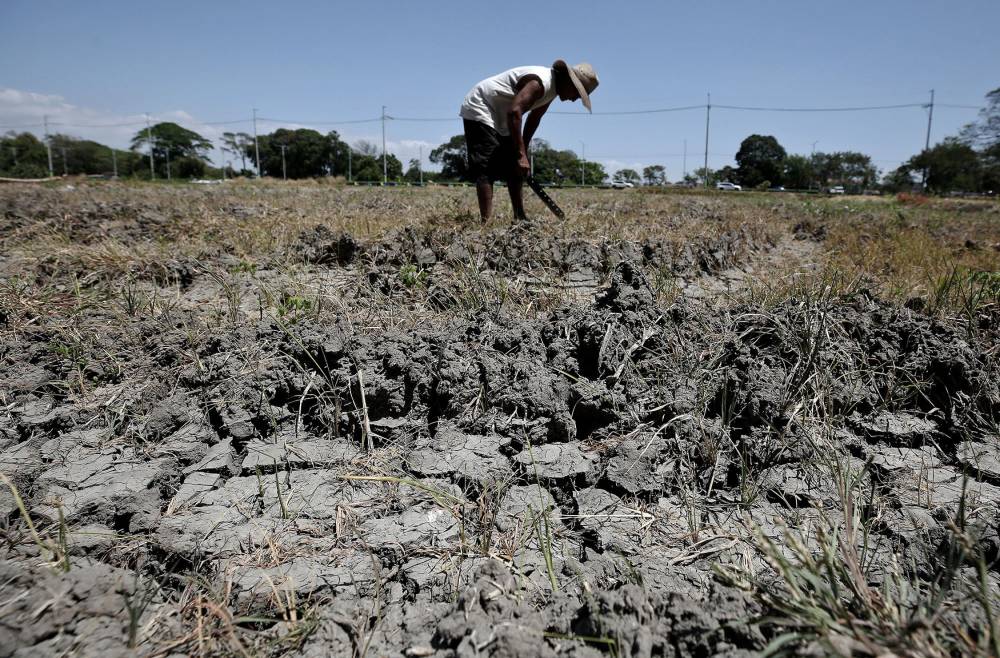More spending on climate-resilient crops proposed

(File photo) DRIED AND CRACKED A watermelon farmer looks at his land in Imus, Cavite, which has dried up amid a strong and mature El Niño. —RICHARD A. REYES
A party list lawmaker on Sunday called on the Department of Agriculture (DA) to invest more in research for climate-resilient varieties of major crops, particularly rice and corn, to reduce the impact of future El Niño phenomena.
AGRI party list Rep. Wilbert Lee cited DA reports placing at P1.75 billion the estimated cost of damage in 32,000 hectares of farmland due to the El Niño phenomenon currently being experienced in the country, which has also caused the displacement of tens of thousands of farmers.
There are eight regions currently most affected by the El Niño phenomenon, including Ilocos, Cagayan Valley, Central Luzon, Calabarzon (Cavite, Laguna, Batangas, Rizal and Quezon), Mimaropa (Mindoro, Marinduque, Romblon and Palawan), Western Visayas, Zamboanga Peninsula, and Soccsksargen (South Cotabato, Cotabato, Sultan Kudarat, Sarangani and General Santos City).
Maximize technologies
In a statement, Lee pointed out in Filipino that it was time to focus on developing climate-resilient rice and corn to mitigate the effects of El Niño in the future.
He noted that the International Rice Research Institute (Irri) has developed climate-resilient rice that can “tolerate extreme climate conditions.”
Article continues after this advertisementREAD: Climate change seen driving more landslides
Article continues after this advertisement“We just need to adopt and build on this technology in order for our farmers to benefit from it,” Lee pointed out.
Drought-tolerant rice varieties developed by the Irri have already been released, including the Sahbhagi Dhan in India; Sahod Ulan in the Philippines; and the Sookha Dhan in Nepal.
The Irri has also been studying flood-tolerant rice varieties, which have been released and are being planted, including Swarna-Sub1 in India; Samba Mahsuri in Bangladesh; and IR64-Sub1 in the Philippines.
Lee further noted a study by the United States Department of Agriculture on drought-tolerant corn, pointing out in mixed English and Filipino, “I suggest we propose a knowledge exchange of sorts so they could benefit from our rice research and we could obtain their corn technology.”
He noted that drought-tolerant corn varieties were made available to US farmers between 2011 and 2013 after decades of research by crop breeders and plant scientists.
“We need to utilize and maximize all available agricultural technologies so as to make our farmers—our food security soldiers—more resilient to climate change,” he said, stressing that having climate-resilient crops would ultimately help the country achieve food security and sufficiency. INQ